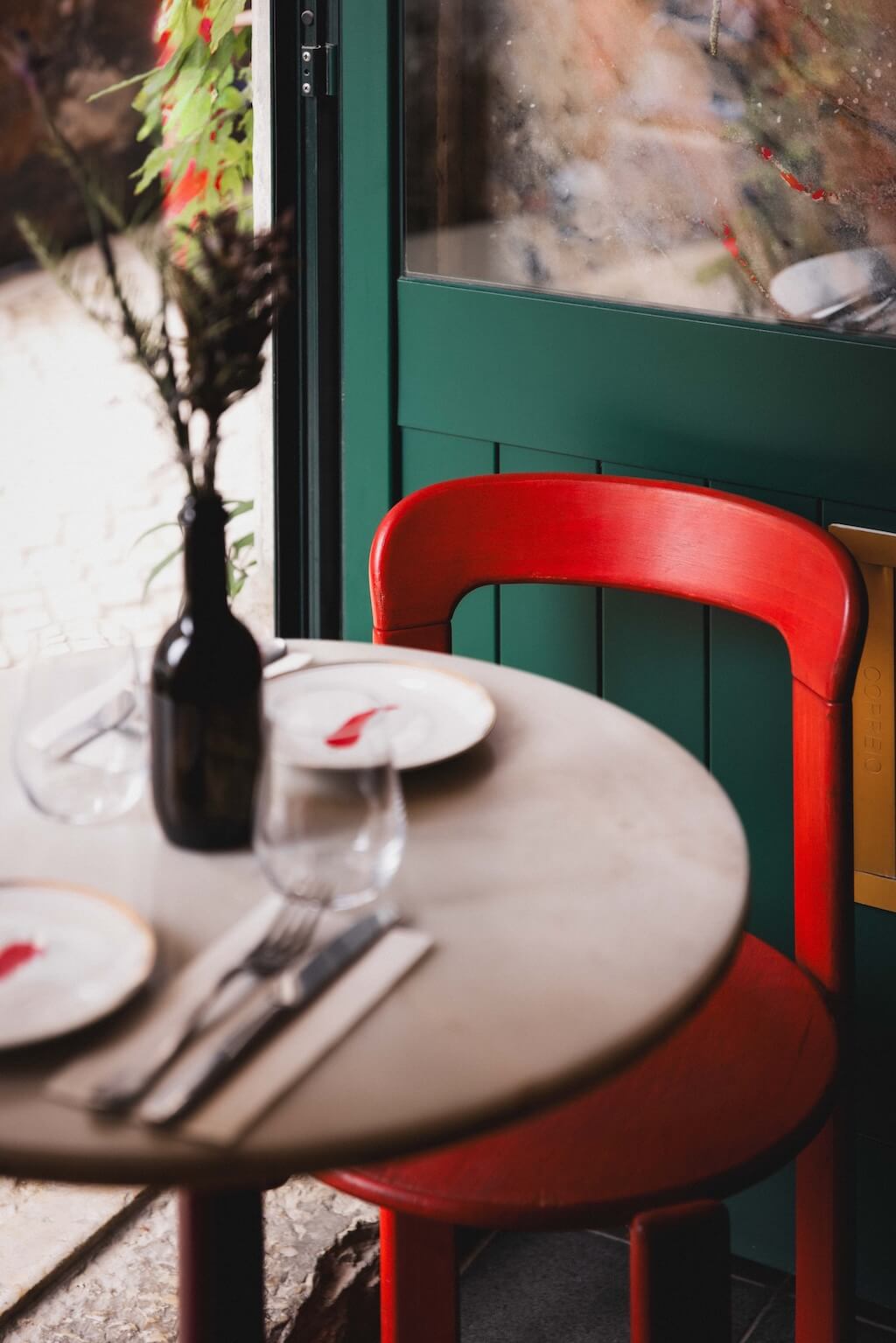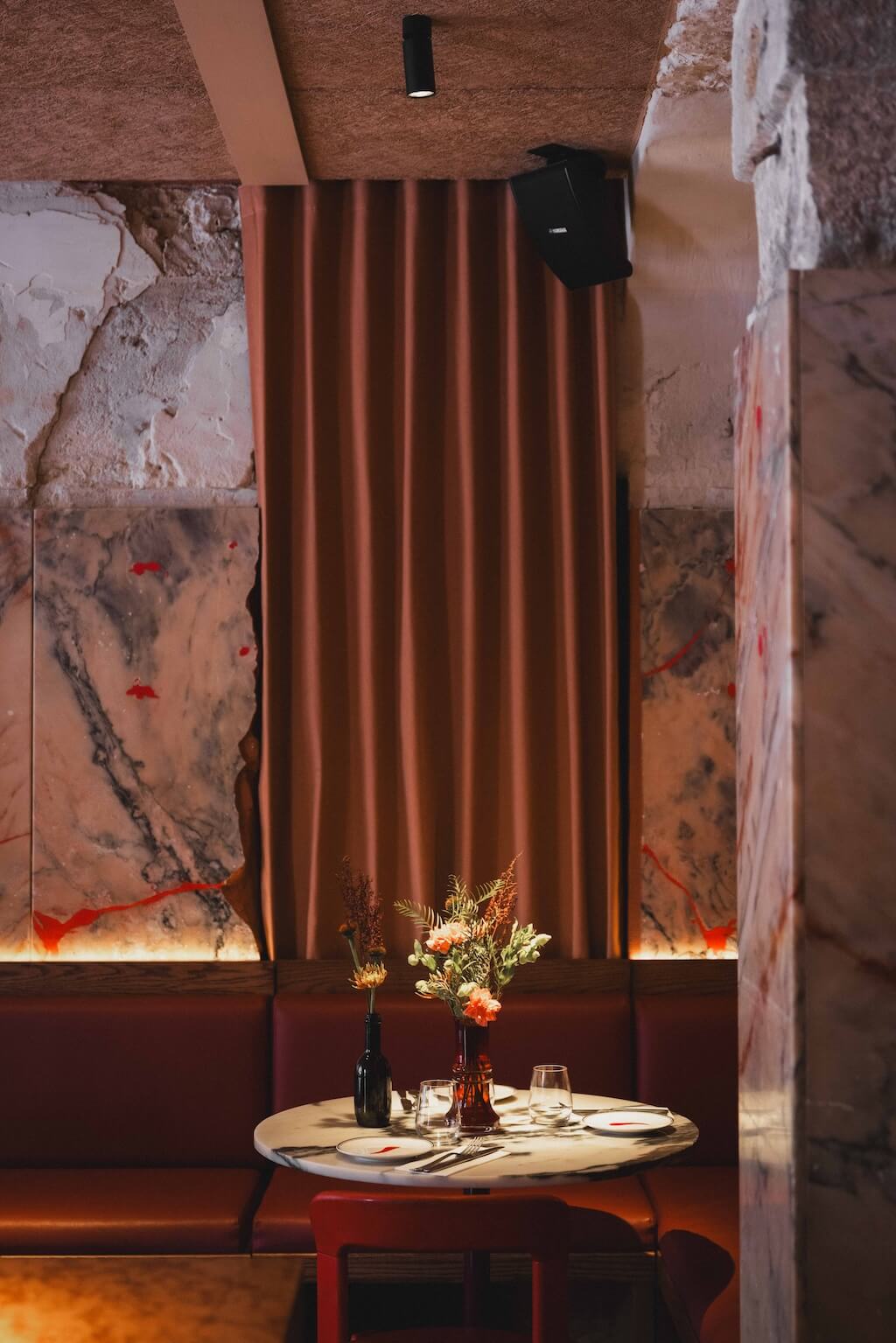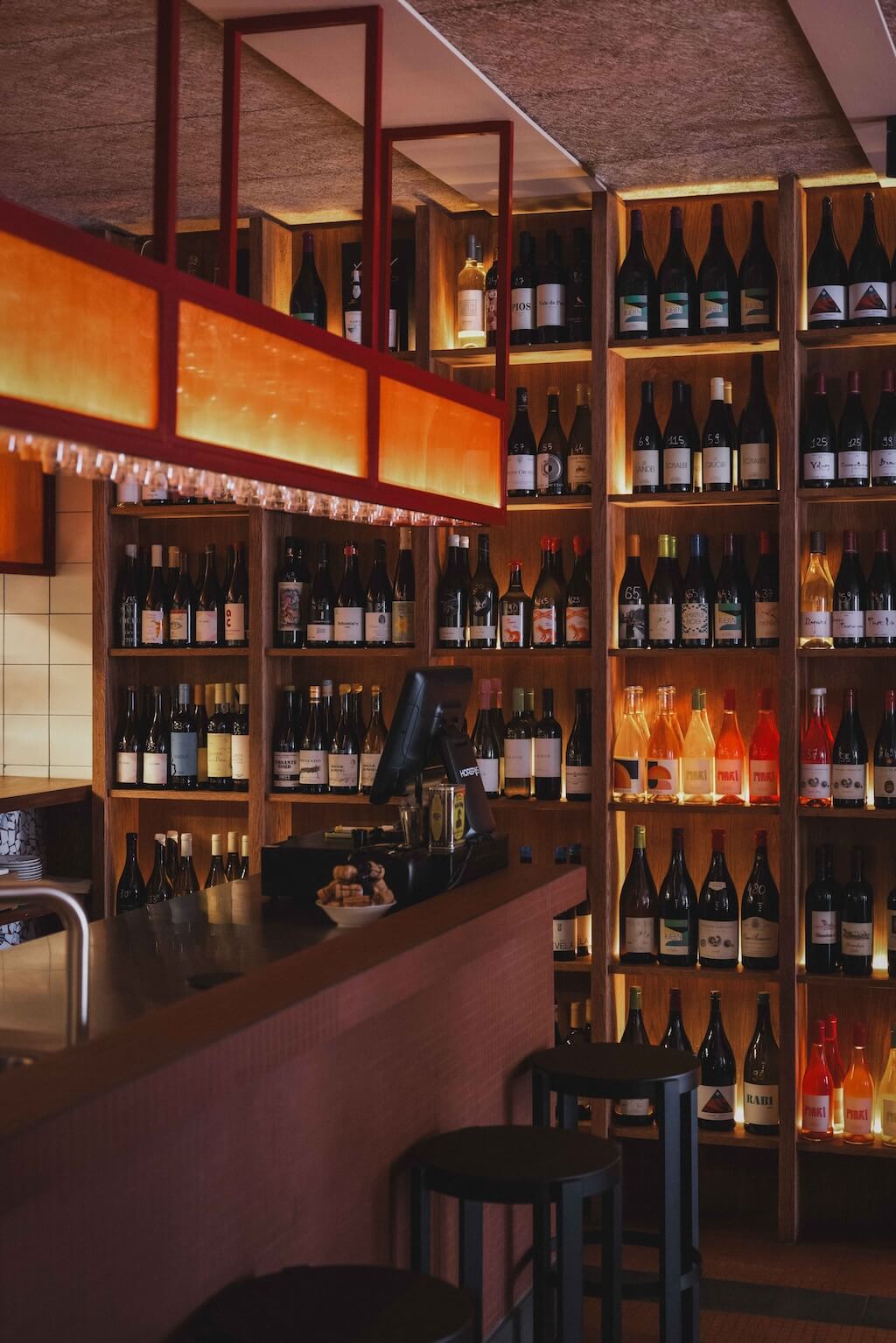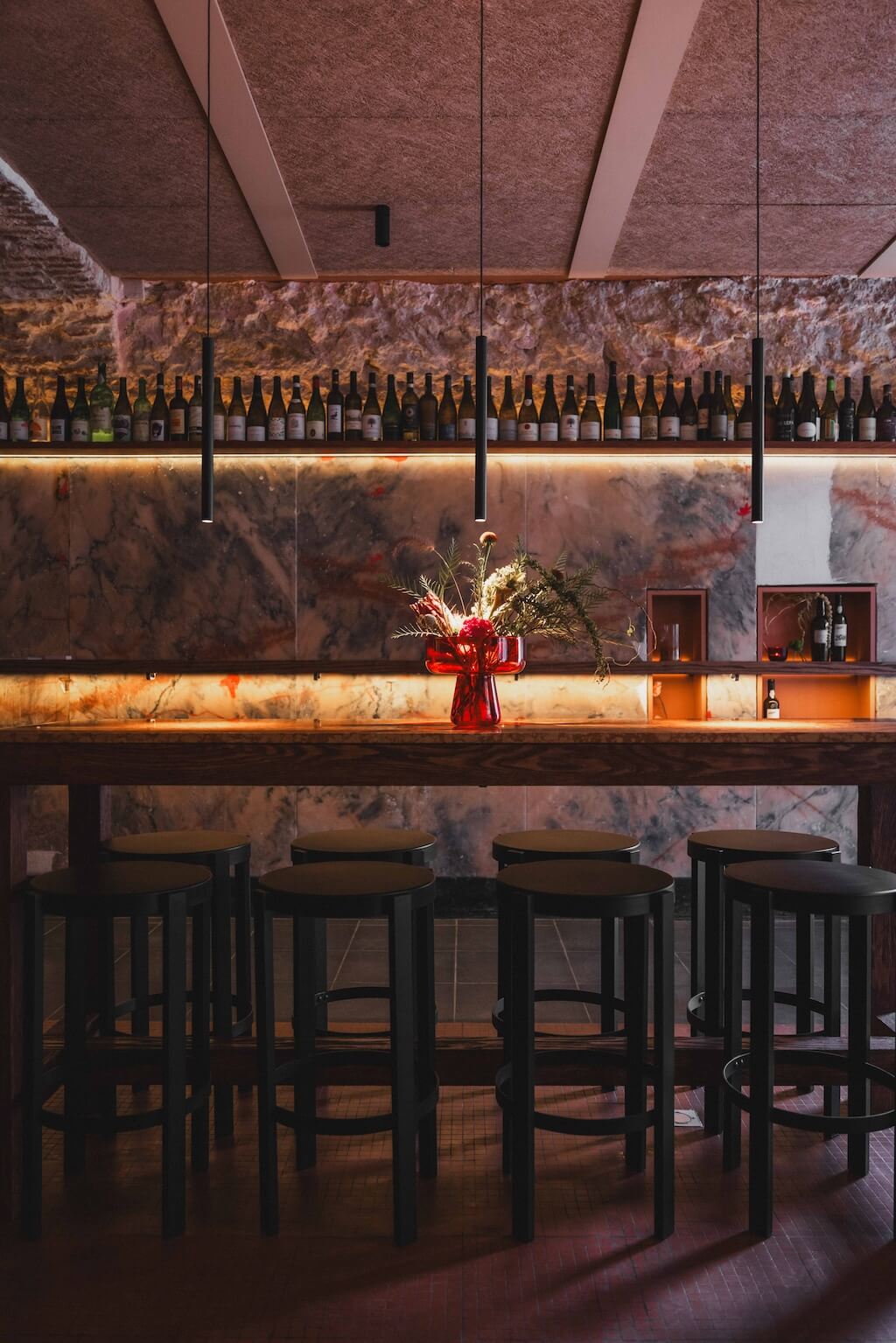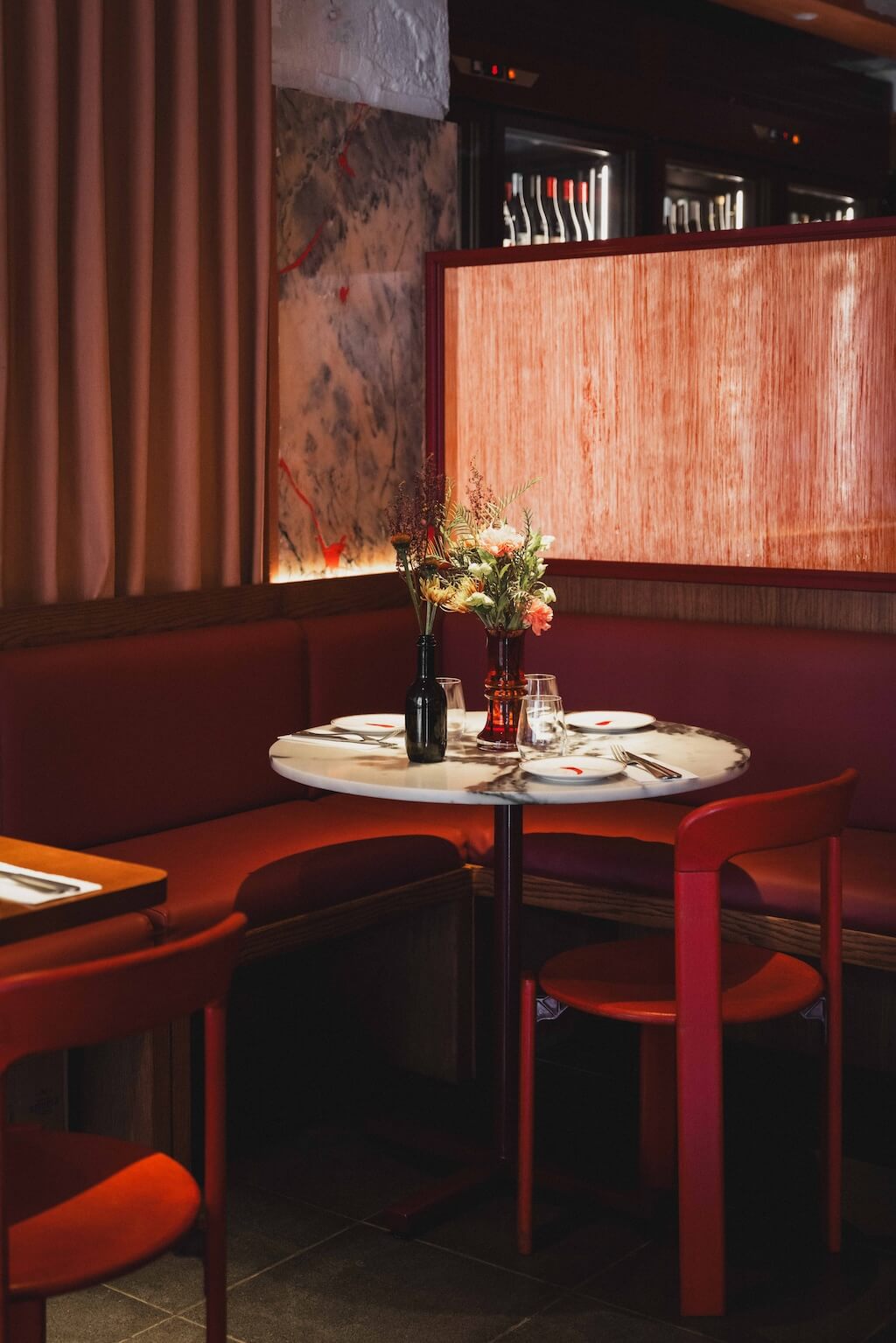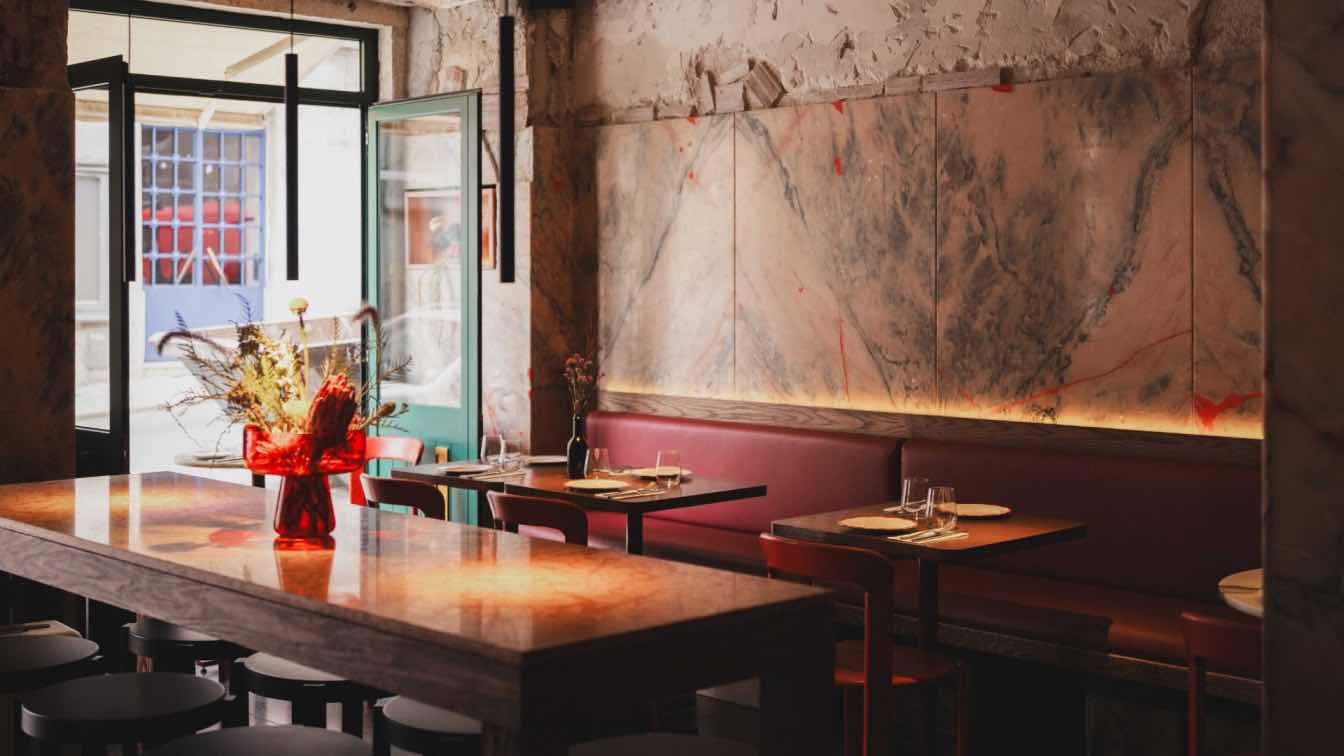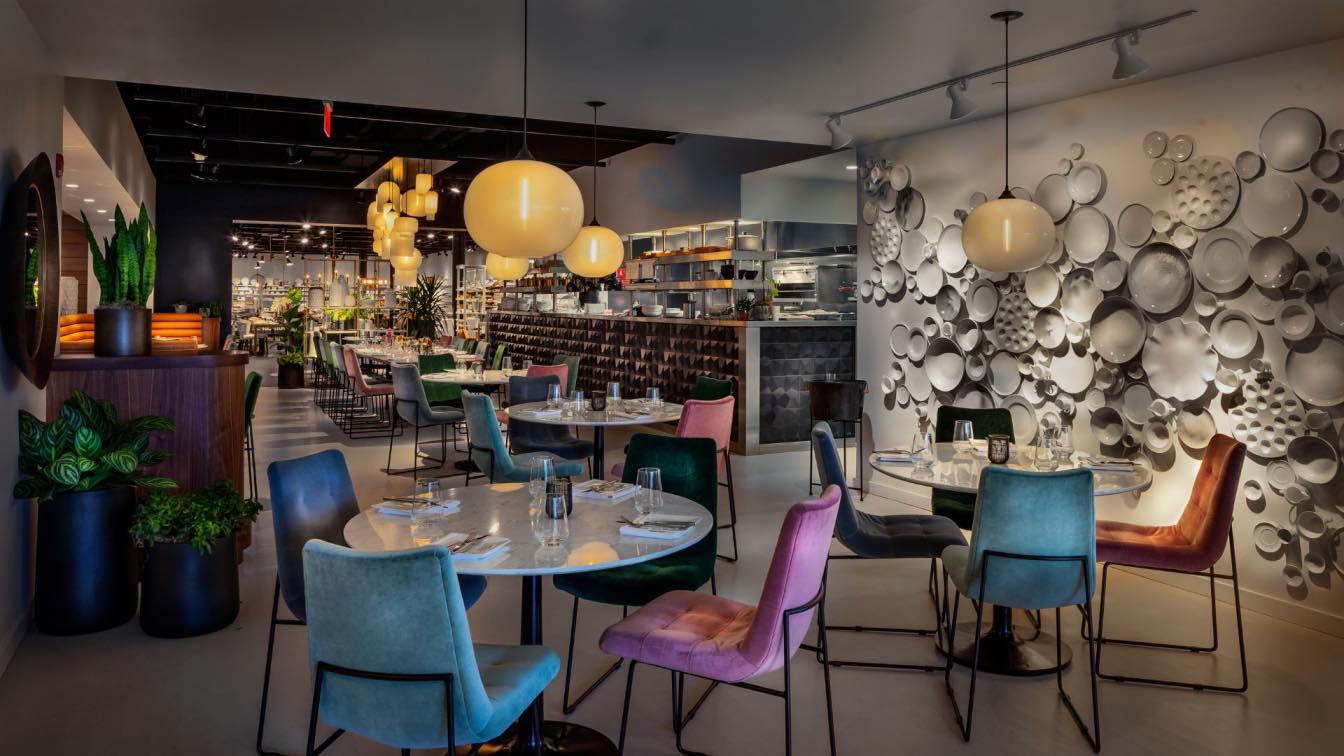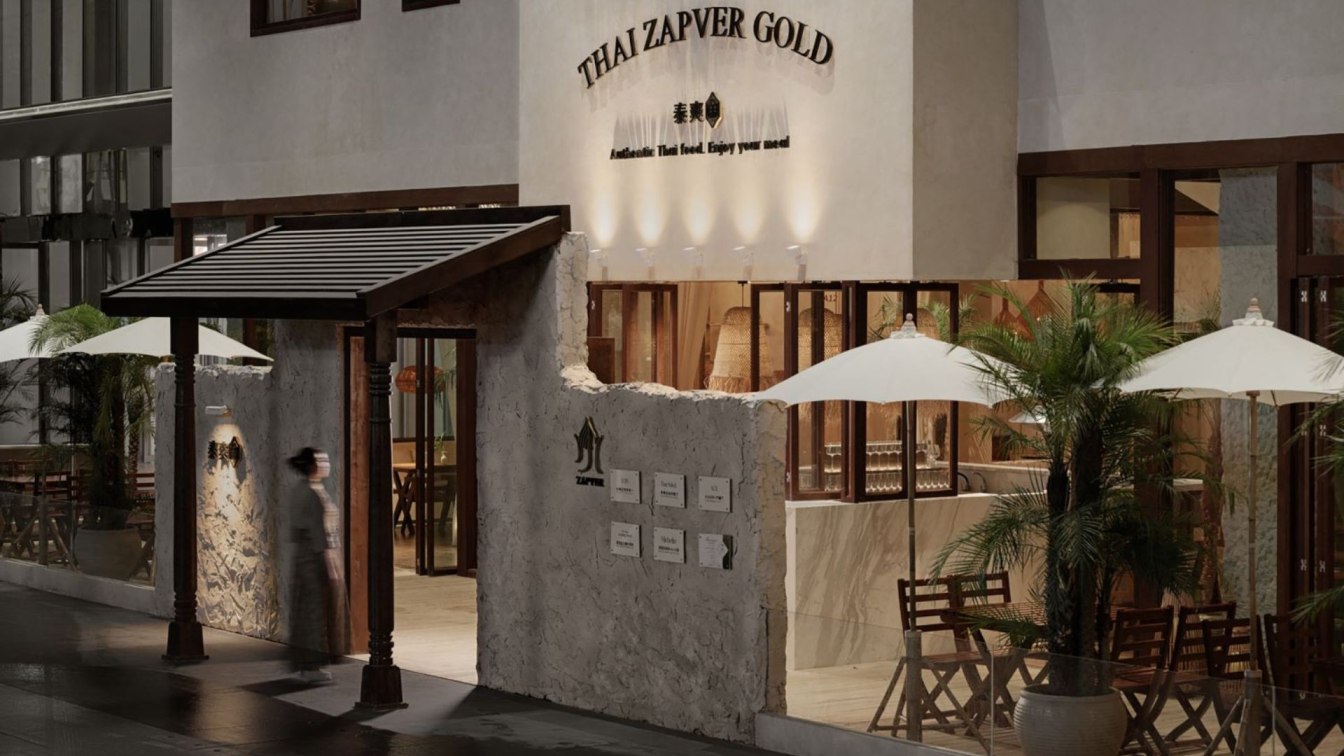NWDS: The bar is located in the Santos district, today the center of expat life, but initially a poor neighborhood with houses built from improvised materials (the original bricolage). Santos’ history seeps through the shape of cropped arches, and the haphazardly laid masonry dating back to 1904, which was revealed during the bar’s construction.
In its previous incarnations, Parra was a "tasca" and then a "talho," traditional Portuguese eatery with modest pricing and butcher shop respectively. From its past Parra has inherited many charismatic materials such as pink marble slabs that still cover the walls and partially cracked azulejo tiles with a peculiar vintage pattern. The original material layer of tiles, stone, wood, and paint is now sandwiched between the new floor and ceiling, placing it in focus.
As another connection to its lineage the bar retained the threefold layout. There is the main area of mixed-tiered seating with patinated backdrop provided by the talho’s marble wall. This pink marble, known as Rosa Portugal, has a ‘meaty’ pattern that reflects its past use as a wall piece in a butcher shop. Some of its cracks and fractures are filled with red epoxy resin, mimicking the kintsugi technique. At Parra, vintage furniture pieces are mixed with contemporary ones, and some old stone slabs now serve as tabletops: for example, a large communal table is used for hosting big gatherings or wine tastings.
At the heart of the space lies ‘the wine axis’ comprising an array of wine fridges, a wine cabinet, and a bar area all employed to showcase wine as the protagonist of the interior narrative. The place has an unparalleled wine selection with some of the rarest bottles of the region.(in art or literature) construction or creation from a diverse range of available things. "the chaotic bricolage of the novel is brought together in a unifying gesture"
The kitchen echoes its history as the former core of a butcher's shop: original blue tiles, unearthed during dismantling, adorn the cooking area. During the renovation, the wall slots that previously housed electric boxes were transformed into altar-like niches with accent lighting. The rest of the bar is soly lit to maintain an intimate atmosphere. The bar has two openings: one serves as the entrance for customers, while the other is a permanently open portal with a 'window' table. There is no glass, so guests are seated right at the imaginary boundary between the interior and the exterior.



